A cerulean blue ocean is outside my window in this exceptional location in Patagonia. Bahia Bustamante is a small collection of buildings developed by an immigrant who started a seaweed business on the Eastern shorn of Argentina back in the 1950’s, extracting colloids for cosmetic use. It is now run by the founder’s grandson as a tourist-centered introduction to the coastal world of Northern Patagonia. With only 6 cabins, each with 2 bedrooms and a shared bathroom, our group occupies four of them and we have greatly been enjoying the quiet beauty, exceptional food, and spectacular tours that are part of their offering.

We flew into Trelew and then were driven for 4 hours South to this location on a cove, with a guide providing us information about the area and life in this sparsely inhabited land. The electricity here is from solar power during the day and a generator during the early part of the night. A vineyard has been planted between our cabins and the ocean and we found out there are volunteers from around the world who come to work here for a few months in their organic garden and in the kitchen. It is a world apart from Buenos Aires.
We have had some truly memorable experiences here. The dry Patagonian pampas is hard grey dirt with rolling hillocks covered by scattered short round green bushes and dry grasses. Animal life is an amazing collection of native species, such as the large energetic llama-like Guanaco, the big and small Rhea which are South America’s form of ostrich, small grey foxes, armadillos, hares (imported from Wales), many different kinds of birds, from large comorants, white egrets, red-topped karakara birds to oyster catchers and sand pipers. And then there are the spectacular sea mammals, great herds of sea lions and the most iconic of all, large groups of Magellanic Penguin.
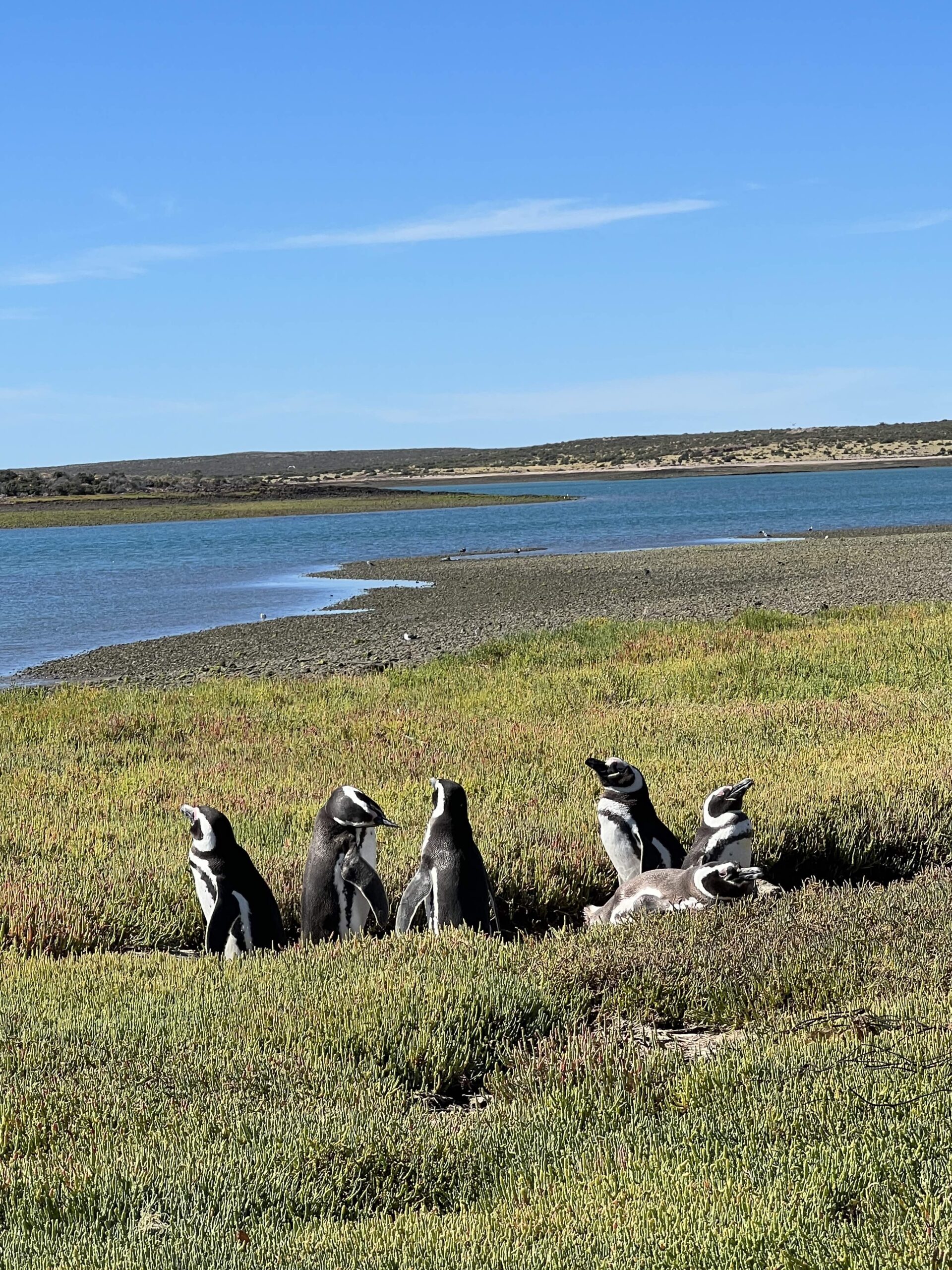
One morning we walk to visit tidal pools, where, in one, a large grouper fish lives together with many kinds of crustaceans. We visit piles of sea shell remains from very early human communities living here and eating off the sea. We clamber down to a sandy beach and almost everyone swims in quite cold beautiful clear water.
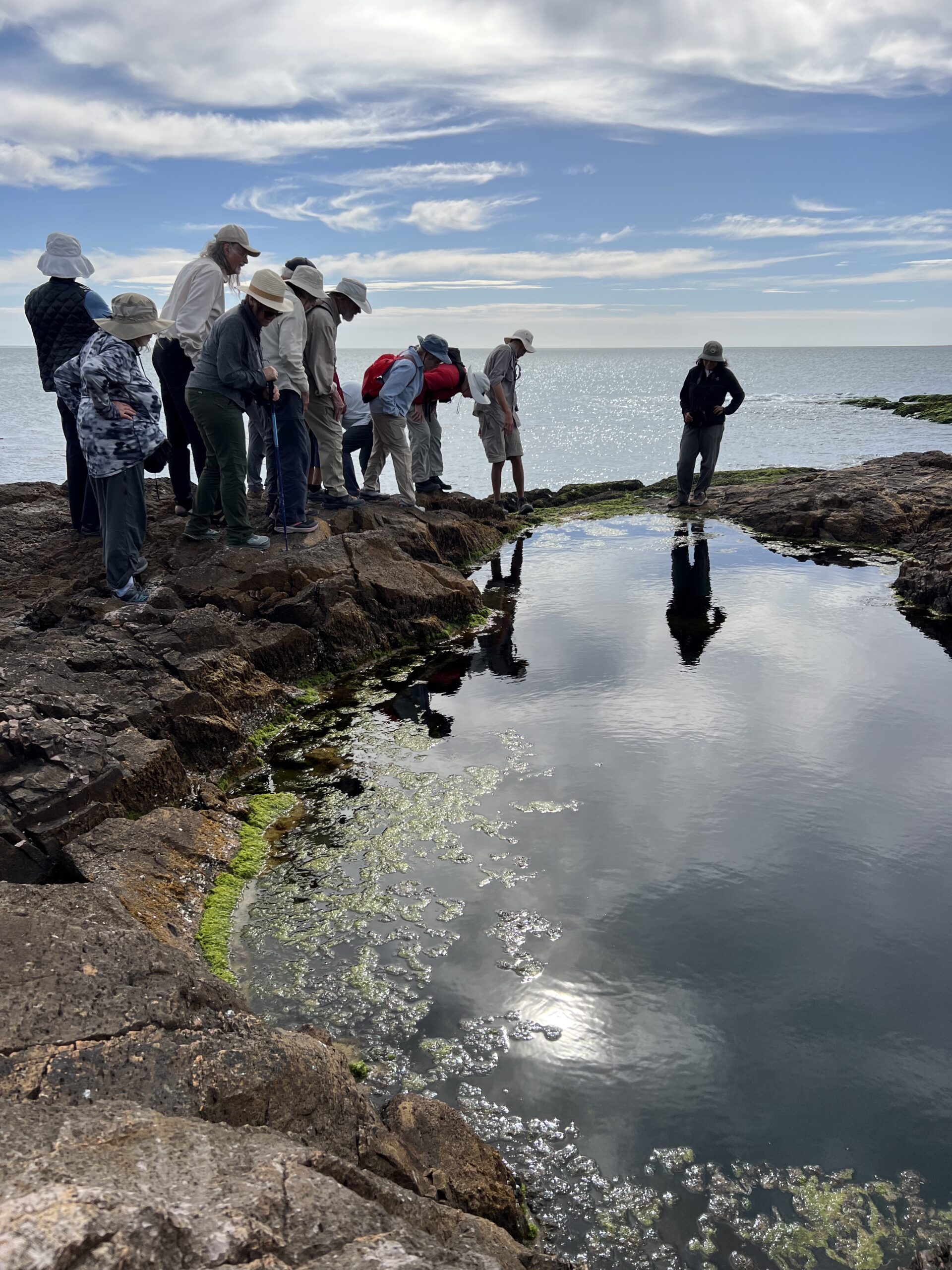
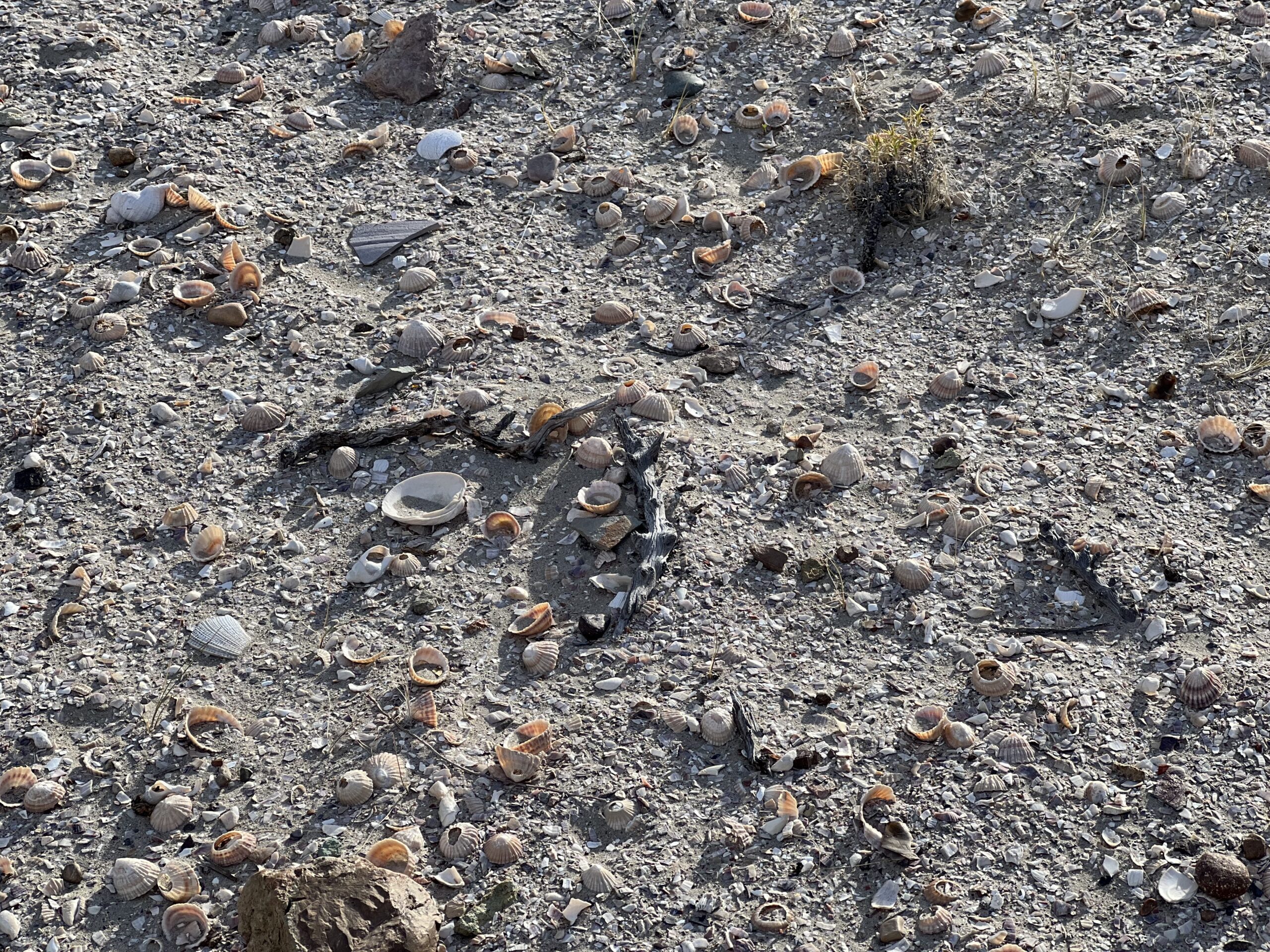
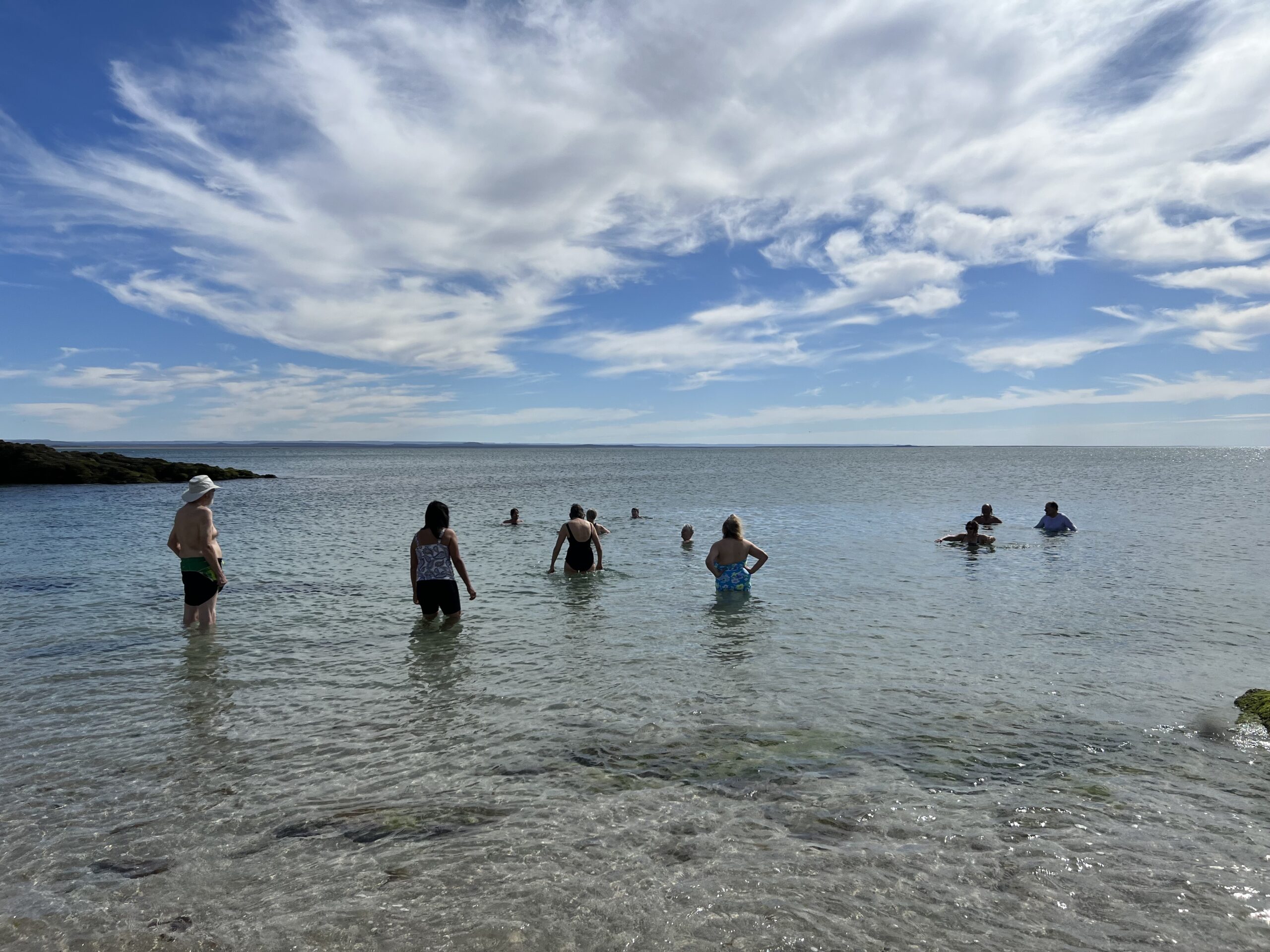
The afternoon was a remarkable trip in a small motor boat to visit large herds of sea lions, the great bull alpha males trumpeting their power standing guard over their harems of slick-coated black females surrounded by numbers of adorable small black pups. On a nearby island the juvenile males live out their lives waiting for a chance to find a mate. And separate and around this activity the penguins stand sentry on the shore, sometimes jumping into the sea to get nourishment. Sea lions frolic around our motor boat while the penguins look on.

The most magical of all was our trip today to a penguin island. We needed to wait for low tide to allow us to walk across a wet and slippery isthmus which connects the mainland to the island. The ground is a collection of barnacle covered volcanic rocks in the middle of pools of water with many kinds of colored seaweed. It is hard for all of us to walk on the uneven, slippery and sharp surface and many of us use walking sticks. The island itself is covered with a spongy green vegetation called salcornica around the shore with small low bushes scattered closely together inland which are the rookery of penguin nests. We slowly walk around the nests, trying not to startle the local inhabitants, looking under the small green shrub bushes where we see both mature adults and still maturing juveniles learning how to imitate their elders. The young penguins looks up at us with curiosity while the elders seem more wary. By the coast, a single penguin at a time takes the journey to the sea, waddling and sometimes a little unsteady in their journey for food. We sit and have some drink and snacks while around us a group of penguins cool their feet in a pool while others walk to the ocean and dive in.

We have perfect warm summer days and, we are told, unusually calm without wind. But 10 days ago they had an unusual 2 days of rain which created (for the first time ever the staff reported) the ideal condition for mosquitos which were a significant problem for some of us. And we were also told that it was much worse a few days earlier so we were fortunate.

The sunrise at 5:15 was beautiful over the ocean. The nighttime sky was also clear and we had a wonderful star-gazing experience at 11 pm at night with our great guide Nico who formerly worked in an Argentinian planetarium. He showed us the Southern Cross which guides navigators in this lower half of our hemisphere, the upside-down Orion constellation, and most strange of all the inverted moon, not a man in a moon but another kind of face perhaps. We were hampered from seeing many stars by an almost full moon casting light around us but it gave us a good introduction to the southern sky.
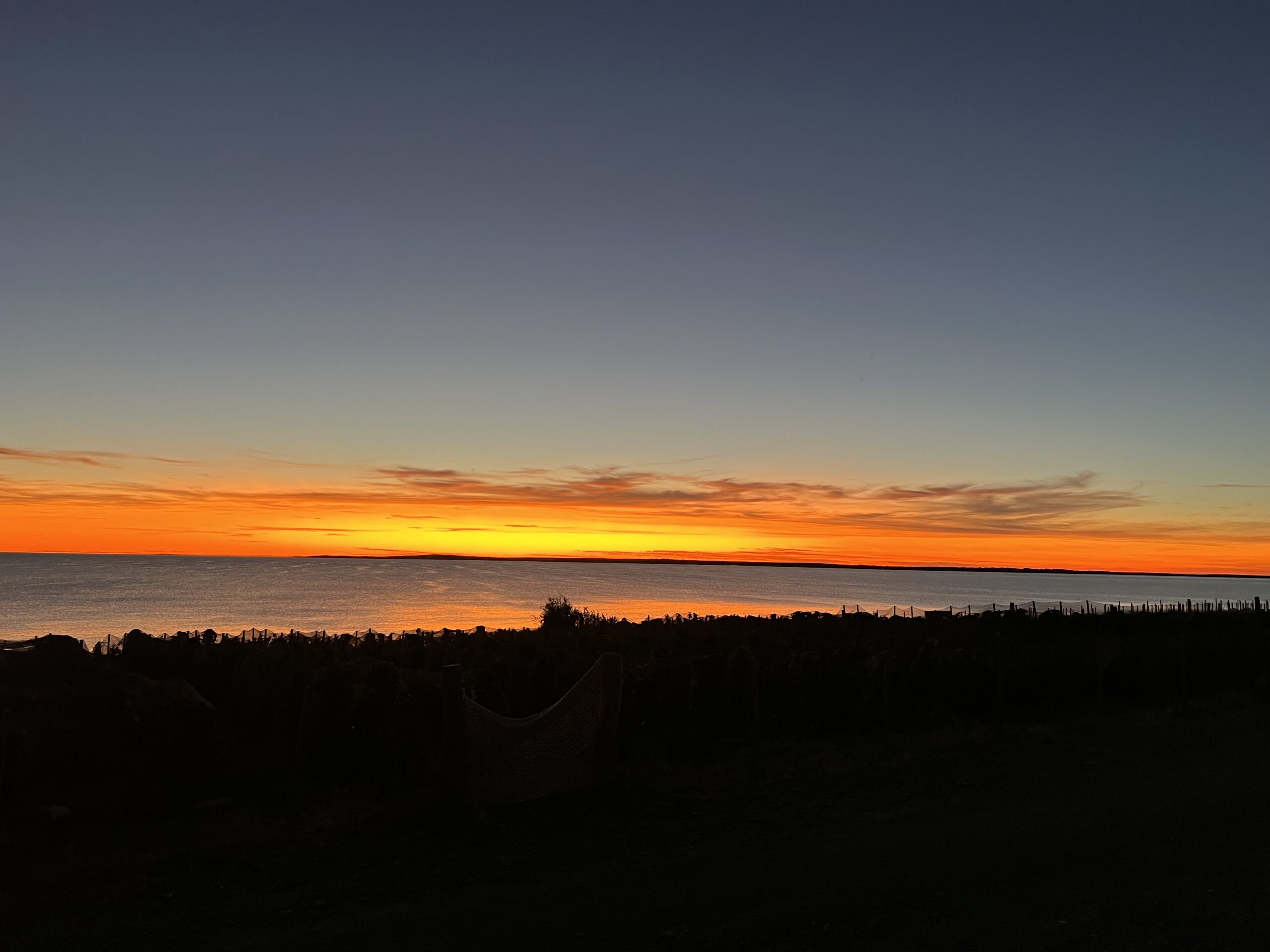
I will end with a few words about the food. Basically, we were treated to a lunch and dinner worthy of a 5 star restaurant. And they very thoughtfully made special vegan options for me. There were appetizers such as ceviche with langoustines and corn empanadas, main dishes included guanaco steak for meat eaters (I was given fried eggplant instead) which we were told were bought from the local farm where the owner hunted and killed the guanacos, although not females, juveniles, or the alpha males. Todays final lunch was a pasta with pesto sauce made of the salcornica, the local grass we had seen covering the penguin island, delicious but salty. We have deeply enjoyed out time here.

